Lok Sambhashan Research Journal - ISSUES
Archives
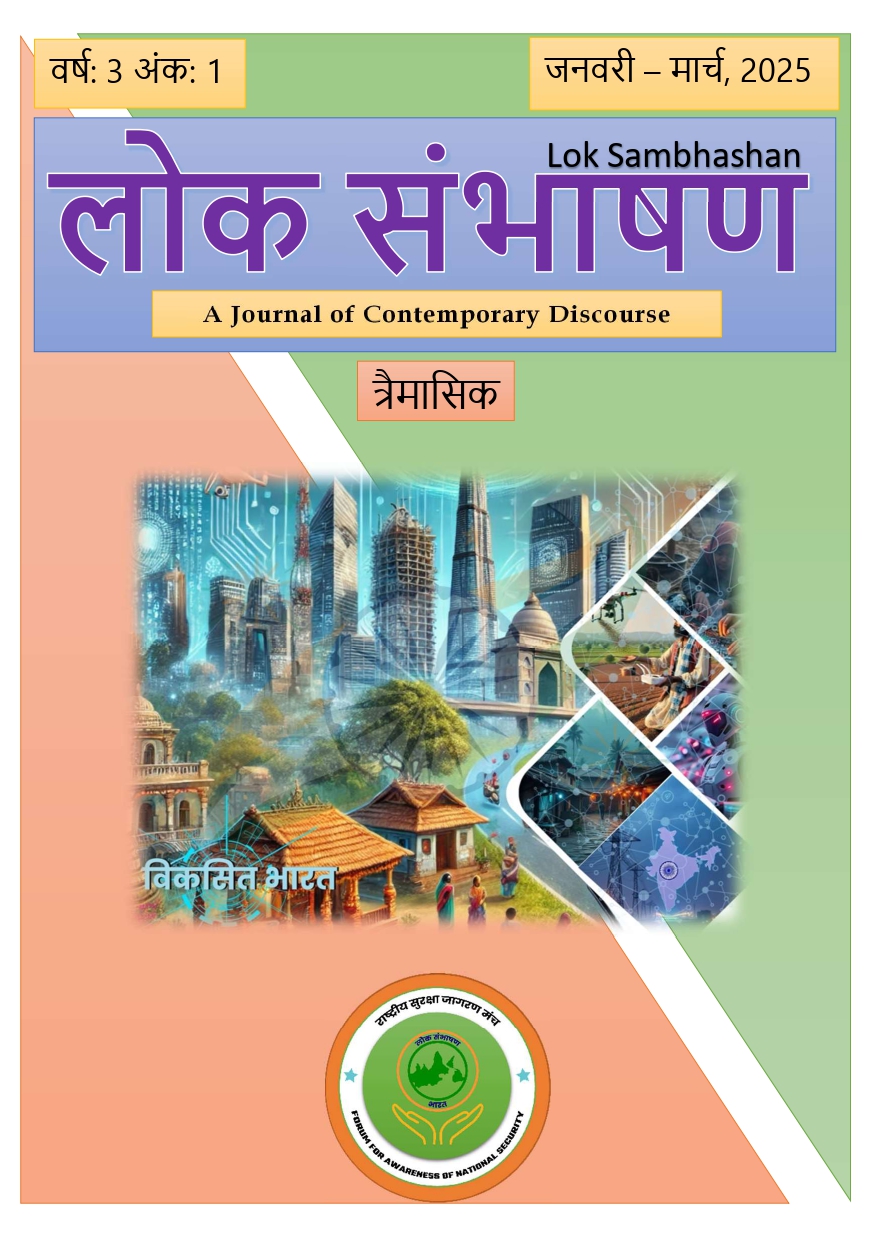
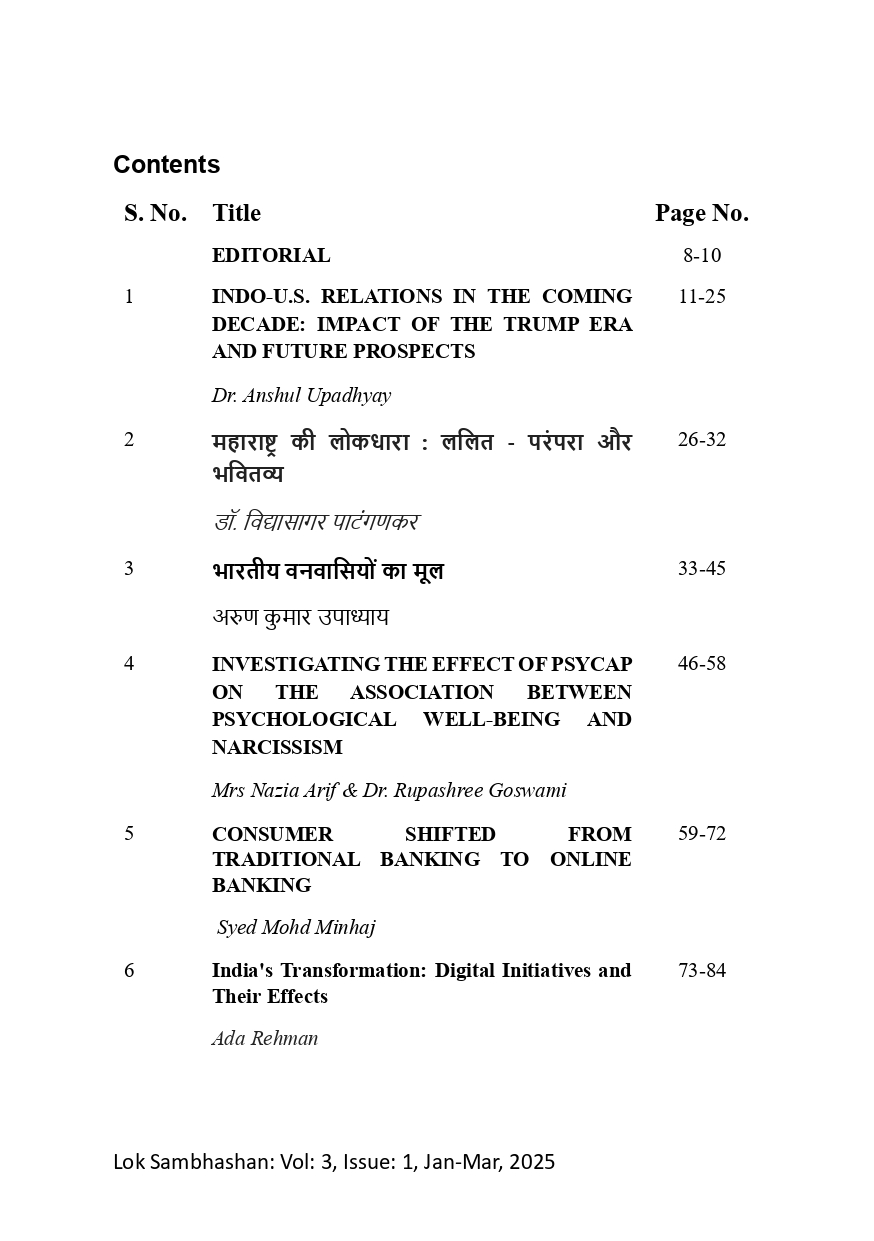
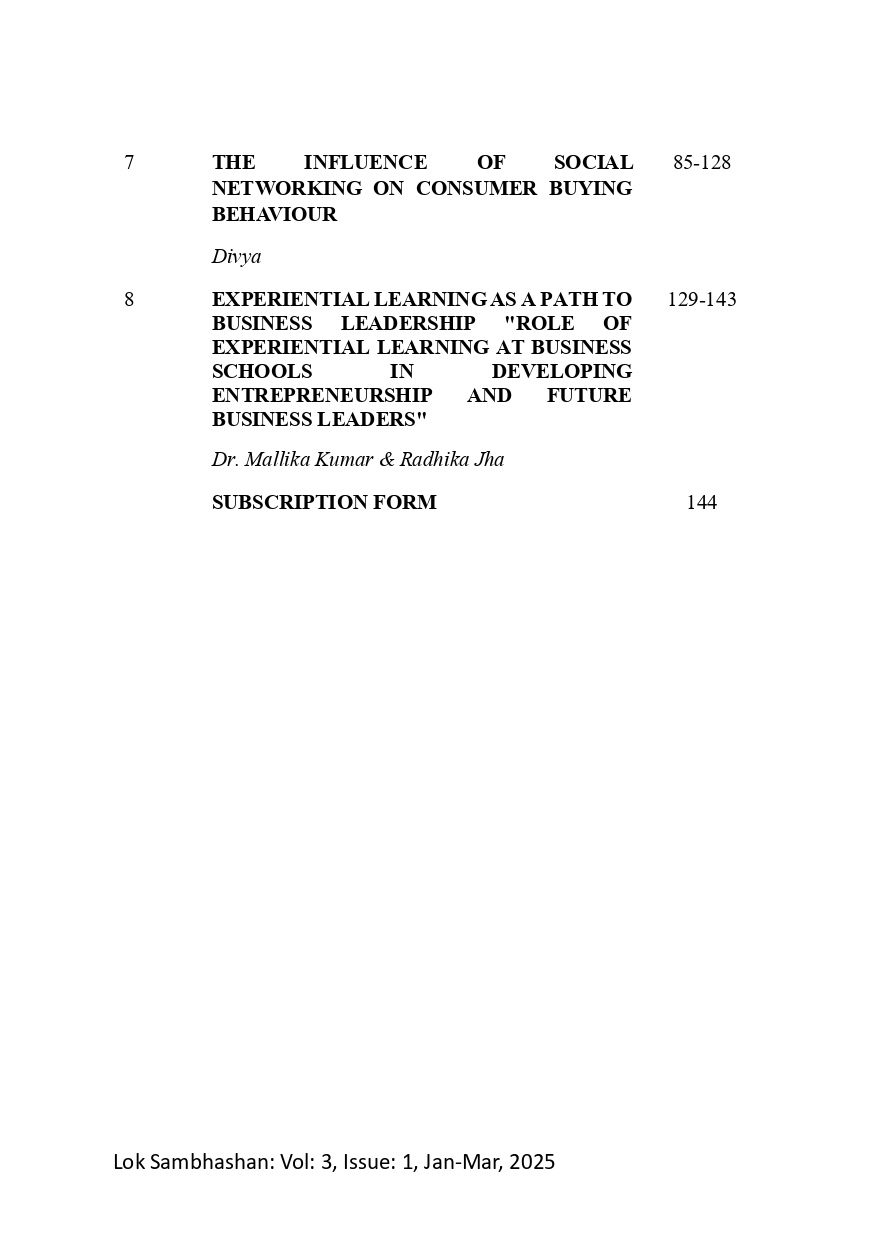
| EDITORIAL PERSPECTIVE: | Page No : 08 |
Abstract:
भी प्रोत्साहित कर रही है। डिजिटल शिक्षा कार्यक्रमों ने छात्रों को उच्च गुणवत्ता वाली शिक्षा सुलभ कराई है, विशेष रूप से ग्रामीण और सुदूर क्षेत्रों में। डिजिटल स्वास्थ्य सेवाओं ने मरीजों और डॉक्टरों के बीच संपर्क में सुधार किया है, जिससे उपचार की प्रक्रिया में तेज़ी आई है। डिजिटल गवर्नेंस ने सरकारी प्रक्रियाओं में पारदर्शिता और जवाबदेही को बढ़ावा दिया है, जिससे भ्रष्टाचार में कमी आई है। डिजिटल सेवाओं ने नागरिकों को अधिक सशक्त और स्वावलंबी बनाया है, जिससे समाज में एक सकारात्मक बदलाव आया है । डिजिटल इंडिया कार्यक्रम का उद्देश्य देश में डिजिटल सेवाओं को सुलभ बनाना, डिजिटल साक्षरता बढ़ाना और डिजिटल बुनियादी ढांचे को मजबूत करना है। इस पहल के अंतर्गत, ग्रामीण इलाकों में इंटरनेट पहुंच, ऑनलाइन सेवाओं का विस्तार, और स्मार्ट शहरों का विकास हो रहा है । इससे न केवल लोगों का जीवन आसान हुआ है, बल्कि देश की आर्थिक स्थिति में भी सुधार आया है । आज उपभोक्ताओं का पारंपरिक बैंकिंग से डिजिटल बैंकिंग की ओर रुझान बढ़ता जा रहा है। यह परिवर्तन विशेष रूप से मोबाइल बैंकिंग, इंटरनेट बैंकिंग और अन्य डिजिटल वित्तीय सेवाओं के माध्यम से संभव हुआ है । इससे बैंकिंग सेवाओं की पहुंच और सुविधा दोनों में सुधार हुआ है। वहीँ सोशल नेटवर्किंग ने उपभोक्ताओं के खरीद व्यवहार को काफी हद तक प्रभावित किया है । आजकल, सोशल मीडिया प्लेटफॉर्म्स पर उत्पाद समीक्षाओं, विज्ञापनों और प्रमोशन्स के माध्यम से उपभोक्ता अपने खरीद निर्णयों को प्रभावित करते हैं । यह प्रभाव विशेष रूप से युवा पीढ़ी में देखा जा सकता है । डिजिटल इंडिया पहल ने देश को आधुनिकता के मार्ग पर अग्रसर किया है। यह न केवल तकनीकी उन्नति का प्रतीक है, बल्कि एक ऐसा माध्यम है, जो समाज के सभी वर्गों को एकजुट कर रहा है । डिजिटल इंडिया का प्रभाव सिर्फ वर्तमान पर ही नहीं, बल्कि भविष्य पर भी गहरा और सकारात्मक होगा । इस पहल ने भारत को एक डिजिटल राष्ट्र के रूप में स्थापित करने में महत्वपूर्ण भूमिका निभाई है जो निरंतर प्रगति की दिशा में अग्रसर बनाए रखेगा। विगत इस दशक को भारत के सामाजिक-आर्थिक नव जागरण के रूप में इतिहास के अन्तरगत रेखांकित किया जायेगा |

Dr. Anshul Upadhyay
ABSTRACT
Mrs Nazia Arif & Dr. Rupashree Goswami
ABSTRACT
Dr. Mallika Kumar & Radhika Jha
ABSTRACT
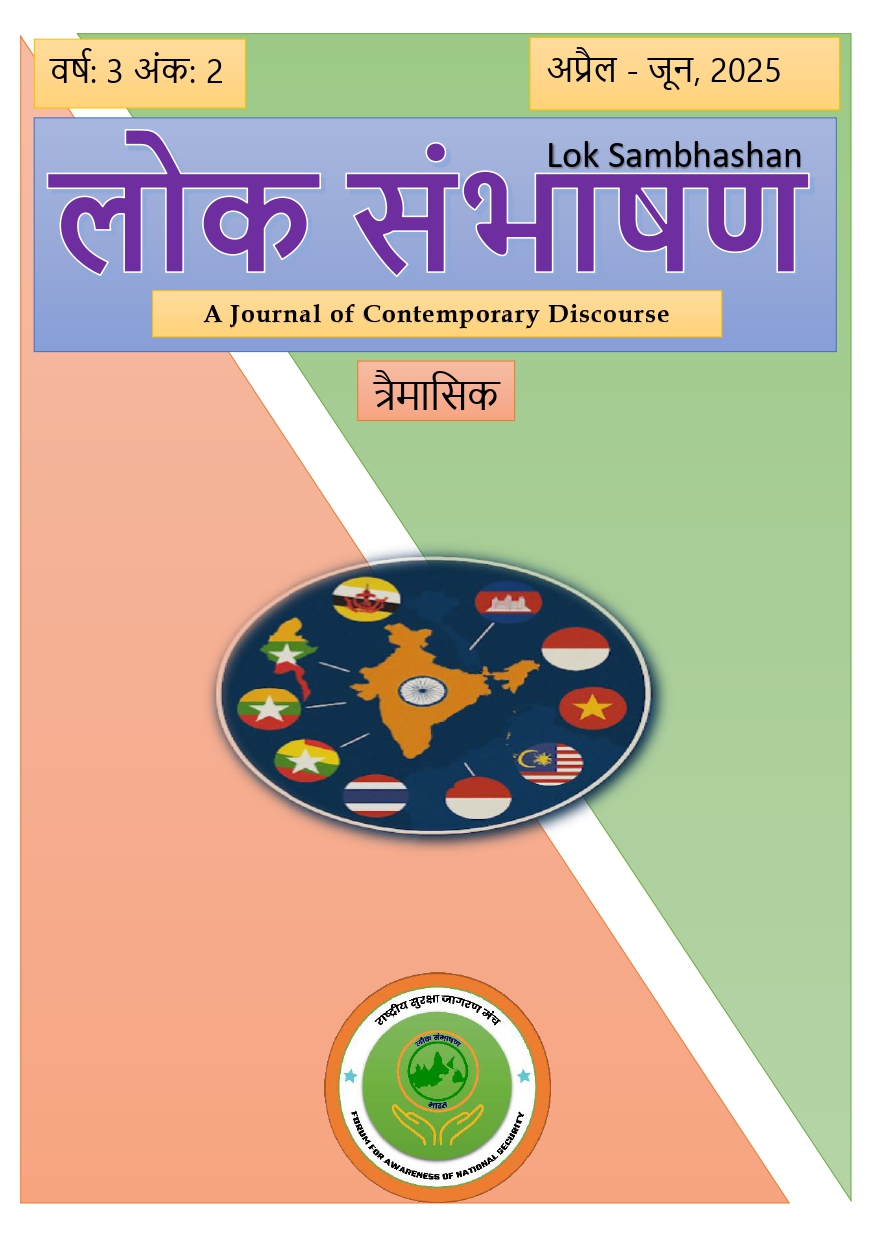


| EDITORIAL PERSPECTIVE: | Page No : 08 |
Abstract:
In the increasingly interconnected world of the global
Internet era, the paper "Communication Roadmap between
India and Southeast Asian Nations: An Internet Research
Analysis of ASEAN” written by Dr. Anshula Garg provides
an important insight into the role of the Internet in
foreign relations. This paper highlights the important
role of communication in understanding the significance
of the digital landscape in contemporary diplomacy and
promoting close mutual relations. In the same context,
the scholarly research "Digital Arch: India’s Engagement
with its Southeast Asian Diaspora Through Social Media”
of Ayushi Kesarwani highlights how digital platforms and
social media are playing an important role in reviving
cultural ties among the Indian diaspora. How India's
cultural heritage, which has had an eternal connection
with South East Asia, is being revived through the
Internet and social media. He has successfully
highlighted that the Internet and social media are an
important dimension in understanding the geopolitical
theatre of the Indo-Pacific region and strengthening
strategic partnerships. Abhinandan Kumar's research
"Strengthening Ties Through the Sea: India’s Maritime
Cooperation with ASEAN in the Indo-Pacific” provides a
comprehensive view of regional security and
understanding of Indian interests in the Indo-Pacific
region. They have presented an important and
comprehensive analysis of maritime security and
cooperation in the context of Indian interests. Adding
to this discussion, an important research "Beyond
Geography: Revisiting Cooperation between India and
South-East Asia in Indo-Pacific” by Megha Chakravarty
and Animesh Mishra helps us to understand the cultural,
economic and strategic relations between India and
Southeast Asia in the context of the Indo-Pacific
framework, going beyond the traditional geographical
boundaries. Apart from this, strategic and digital
connectivity also underlines the important role that
human and cultural exchanges are playing in this.
Similarly, the scholarly research
"Role of Indian Higher Education in Strengthening Relations with Southeast Asia"
by Nikhil Kumar and Dr. Saumya Sisodia highlights that
the Indian knowledge tradition, which is already
preserved in Southeast Asia, is being further enriched
by mutual cooperation in higher education. They
successfully establish that the exchange of higher
education between Southeast Asia and India has played an
important role in strengthening the cultural strategic
and security relations between India and Southeast Asia.
The philosophical underpinnings of Indian foreign policy
have been beautifully articulated in the important
research "India and Indonesia: Advancing Regional
Harmony Through Vasudhaiva Kutumbakam.” by Vanshika
Sharma and Animesh Mishra. This important research
deeply analyses how the traditional Indian idea of
Vasudev Kutumbakam is important in strengthening
relations between India and South East Asia,
particularly between India and Indonesia, where the
cultural element is stronger than any other element.
Finally, Yash Sharma's
"Problematizing Cartographic Division: A Case of South Asia"
offers a critical perspective on the complexities of
regional identity and the challenges posed by
conventional cartographic representations. While
focusing on South Asia, this paper serves as a valuable
reminder of the intricate historical and cultural
narratives that shape regional perceptions and
interactions, implicitly informing the broader discourse
on India's engagement with its extended
neighborhood.
Collectively, these papers underscore the multifaceted
nature of India's engagement with Southeast Asia. They
highlight the dynamic interplay of economic, strategic,
cultural, and educational factors that contribute to a
robust and evolving partnership. As Lok Sambhashan
presents these diverse perspectives, we hope to
stimulate further dialogue, encourage interdisciplinary
research, and contribute to a deeper understanding of
the intricate ties that bind India and Southeast Asia –
a partnership vital for regional prosperity, stability,
and harmony in the 21st century.
Abhinandan Kumar
ABSTRACT
Ayushi Kesharwani
ABSTRACT
Sarika Ram Nath
ABSTRACT
Nikhil Kumar & Dr. Saumya Sisodia
ABSTRACT
Megha Chakraborty & Animesh Mishra
ABSTRACT


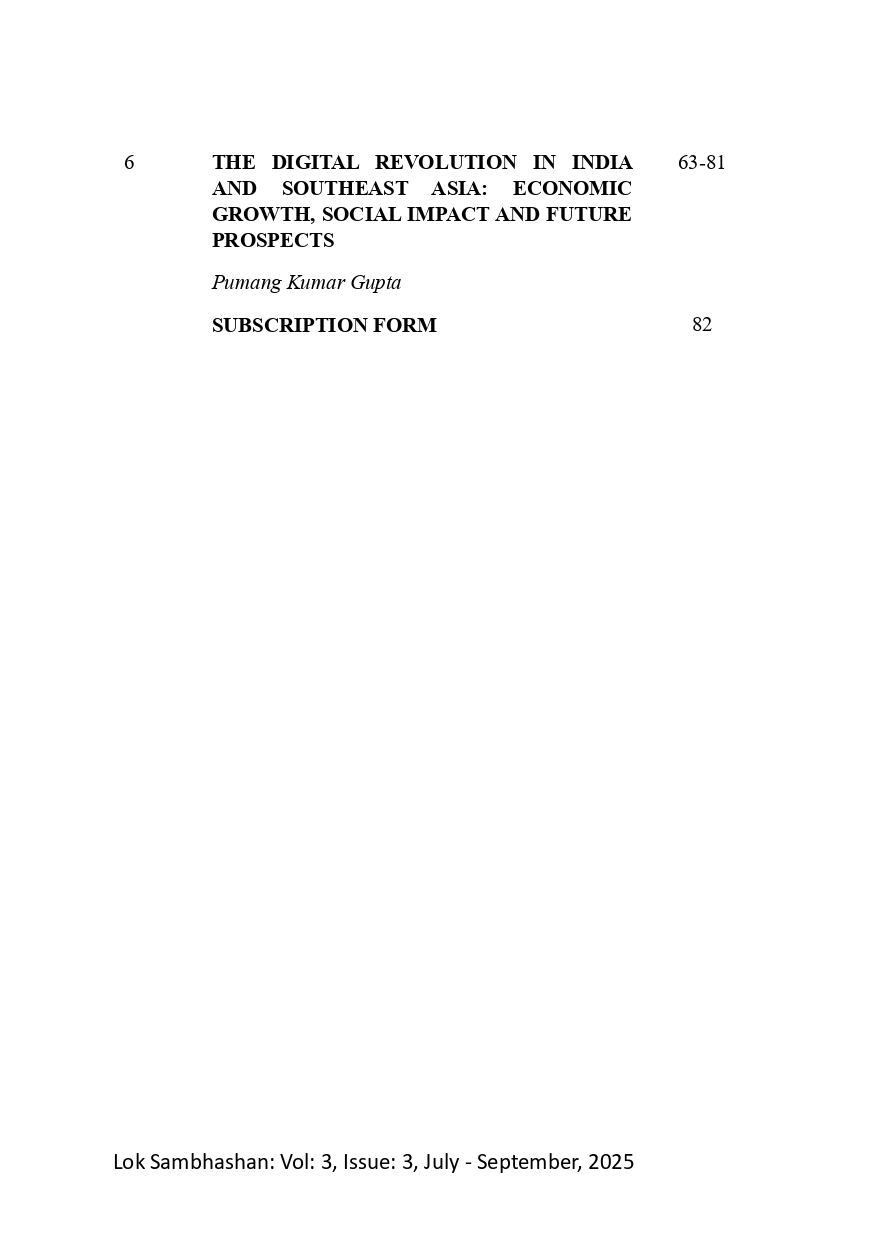
| EDITORIAL PERSPECTIVE: | Page No : 08 |
Abstract:
India's philosophical tenet of Vasudhaiva Kutumbakam—the
notion that the universe is a one family—strongly
resonates with Southeast Asia. This principle supports
cultural exchanges, collaborative environmental
alliances, and educational efforts, cultivating
connections that military or commerce agreements alone
cannot establish. In an era of discord and division,
common values function as a stabilising influence. The
boundaries that delineate South Asia, mostly a remnant
of colonial mapping, perpetuate conflict and turmoil. A
progressive partnership must transcend inflexible
sovereignties in favour of people-centric
integration, acknowledging common history,
interconnected economies, and entangled destiny.
Adaptive, humanitarian strategies regarding borders may
alleviate tensions and enable new avenues for
cooperation.
Whereas spices and silk facilitated the ancient Silk
Road, data and digital platforms drive the contemporary
iteration. Innovators from India and Southeast Asia,
such as BYJU’S in India and Tokopedia in Indonesia, are
demonstrating that technology can effectively close
developmental disparities. Regional collaboration in
cybersecurity and digital literacy, along with trade
agreements like as RCEP, is establishing the groundwork
for a genuinely inclusive digital economy. Physical
connections, such the India–Myanmar–Thailand Trilateral
Highway and the projected Mekong–India Economic
Corridor, are uniting the area more closely. In
conjunction with digital infrastructure, these
initiatives aim not only to expedite commerce but also
to establish a collective economic and cultural ecology.
India and Southeast Asia are not only responding to
global changes; they are actively influencing them.
Their partnership integrates robust security with gentle
diplomacy, economic advancement with cultural
sensitivity, and infrastructural development with
philosophical foundation. In a time marked by
authoritarianism, inequality, and climate calamity, our
alliance represents a symbol of inclusive,
forward-thinking collaboration. The inquiry now pertains
to whether both parties can maintain the political will
and reciprocal confidence necessary to convert this
auspicious partnership into a paradigm of regional
integration for the 21st century. The "bridge" from the
Himalayas to the Java Sea has the potential to transform
diplomacy by linking two areas.
Aniruddha Saha
ABSTRACT
Dr. Anshula Garg
ABSTRACT
Vanshika Sharma and Animesh Mishra
ABSTRACT
डॉ. नियाज अहमद अन्सारी
ABSTRACT
Pumang Kumar Gupta
ABSTRACT